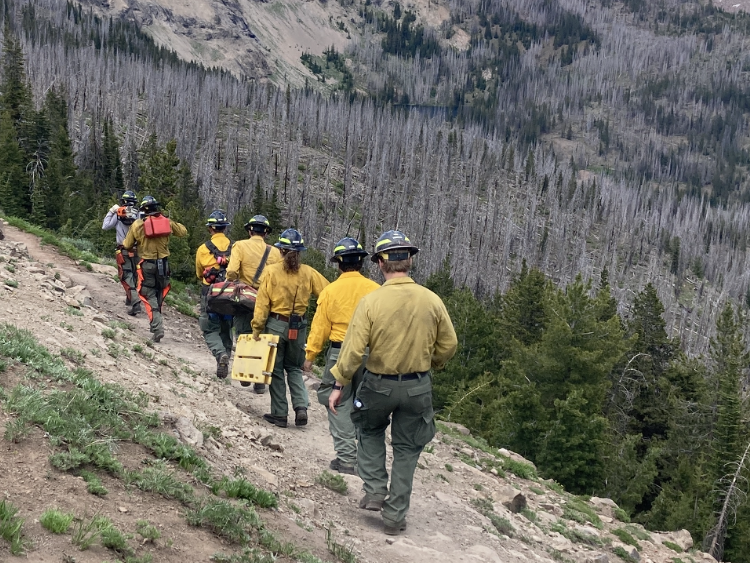Other Views: OPUC sells out Eastern Oregon
Published 6:15 am Thursday, July 20, 2023

- Fuji Kreider
The Oregon Public Utility Commission has ruled in favor of the Boardman to Hemingway (B2H) transmission line, declaring it a public necessity and granting Idaho Power a certificate of public convenience and necessity. This decision allows them to invoke eminent domain over hundreds of miles of land belonging to the peoples of Eastern Oregon.
Eminent domain should only be used as a last resort, when there are no other viable alternatives to achieve a public good. However, the Oregon Public Utility Commission and Oregon Department of Energy have failed us in this regard. OPUC will allow condemnation of land before ODOE has completed the required environmental and cultural survey work. These surveys are essential for finalizing the numerous mitigation plans and determining their value and ultimate costs.
Neither of our state agencies accept responsibility. OPUC claims that mitigation and land condemnation costs are beyond their jurisdiction to regulate, stating it is ODOE’s job. Yet ODOE states that the budget falls outside their purview; it’s OPUC’s jurisdiction. Meanwhile, the well-financed utilities with their army of attorneys have weakened and manipulated Oregon’s administrative rules for decades, a regulatory capture that hamstrings and fragments big picture decision-making by our regulating agencies. This leaves us, the people, caught in a revolving churn of “it’s not in our jurisdiction,” and the only ones connecting the regulatory dots are the utilities, with enormous profits to be made on ratepayers’ backs!
The B2H project is exorbitantly expensive, and ratepayers will bear the burden for 50-plus years. Astonishingly, the actual price tag remains unknown, currently estimated at $1.4 billion. Here are some of the costs that are still looming:
• Implementation of mitigation measures and purchase of mitigation sites. (These will be determined by completion of survey work and finalized plans.)
• Amendments to the project. (The first one, which is pending, adds 1,000 acres and over 40 miles of additional access roads. And bigger amendments coming.)
• Private land condemnation and easement purchases, which this certificate of public convenience and necessity will legally allow. (There are hundreds of parcels with no contract or agreement with the company. The amount of compensation will be set by the courts, and the utilities’ legal fees will be charged to ratepayers.)
Moreover, the company continues to fiddle with reducing contingency funds and a lack of realistic inflationary increases. It is disheartening to witness such disregard for accountability. It is worth noting that Idaho Power and PacifiCorp (same partners as B2H) are also constructing Gateway West, a massive transmission infrastructure project to Wyoming, further burdening ratepayers. Our electric cooperatives (such as OTEC and Umatilla) purchase electricity from the Bonneville Power Administration, which will also experience rate increases due to transmission wheeling charges (aka tariffs).
The decision to proceed with B2H is primarily based on the utilities’ own self-serving data and their claims that the “least-cost/least-risk” option is a high-voltage, long-distance transmission line over other feasible energy alternatives and other routing alternatives. OPUC and ODOE have issued permits and certificates without complete information and without full knowledge of the project’s true costs.
Our investments should prioritize the upgrade, digitization and fire-hardening of our existing regional transmission system. Federal infrastructure funds are flowing for such upgrades, but the B2H project does not qualify for these funds because it was considered “shovel ready” in 2011. By neglecting these necessary upgrades, we are missing out on opportunities to enhance capacity on the existing transmission lines connecting our regions, wildfire protection and cost savings. Additionally, we should not overlook the potential of having to bear the cost of PacifiCorp’s liability in the 2020 wildfires.
It’s OPUC’s responsibility to safeguard the interests of ratepayers by carefully evaluating project costs and considering alternative options for maintaining reliable power. In this case, the costs associated with B2H are imprudent, especially when there are federal funds available to invest in distributed energy resources in the Pacific Northwest, which would create more jobs and propel us toward energy independence.
I urge our state regulators and public officials to reevaluate their decisions and act in the best interests of Eastern Oregon communities. It is high time they prioritize transparency, accountability and their stated mission of protecting ratepayers. Let us not be the victims of shortsightedness, greenwashing and overwhelming corporate influence. Together, we must demand a responsible and sustainable energy future for our state; one where people control more of their energy future and are less dependent on these centralized, monopoly utilities that prioritize their shareholders over the ratepayers and our environment.









